- Home
- Orhan Pamuk
Other Colors Page 23
Other Colors Read online
Page 23
In 1947, just after the Second World War, Gide was awarded the Nobel Prize for Literature. The decision did not come as a surprise; the seventy-eight-year-old Gide was at the height of his fame, hailed as the greatest living French writer at a time when France was still seen as the center of world literature. He was not afraid to speak his mind, and he took up political causes as dramatically as he dropped them; his passionate insistence on the central importance of “the sincerity of mankind” had won him many enemies and admirers.
Many Turkish intellectuals admired Gide, especially those who looked to Paris with reverence and longing. The most illustrious of these was Ahmet Hamdi Tanpinar, who wrote an article for the republican and pro-Western newspaper Cumhuriyet when Gide was awarded the Nobel Prize. I am aware than many of you will not have heard of Tanpinar, so I would like to say a few words about him before I read you an extract from this article.
Tanpinar was a poet, essayist, and novelist who was thirty years Gide’s junior; today his works are seen as classics of modern Turkish literature. He is as well thought of by leftists, modernists, and Westernizers as he is by conservatives, traditionalists, and nationalists; all champion Tanpinar as their own. Tanpinar’s poetry was influenced by Valéry, his novels by Dostoyevsky, and his essays are informed by Gide’s logic and lack of inhibition. But what endeared him to Turkish readers, most particularly intellectuals—what made his work indispensable in their eyes—was not that he was inspired by French literature but that he was just as passionately bound to Ottoman culture, and above all to its poetry and music. He was as preoccupied with the tranquil dignity of the premodern culture as he was with European modernism, and this gave rise to a fascinating tension that Tanpinar bore with guilt. In this respect he calls to mind another non-European writer, Junichiro Tanizaki, who also knew the tension between his country’s tradition and the West as a source of bitterness. But unlike Tanizaki, Tanpinar derived no pleasure from violence or suffering and the perpetration of suffering that this tension engendered, preferring to explore the sorrow and poignancy of a people torn between two worlds.
I shall quote now from Tanpinar’s article, published in Cumhuriyet fifty years ago:
Of the news that has come to us from abroad since the end of the war, few have given me more pleasure than the announcement that André Gide had won the Nobel Prize. This honorable gesture, this wholly deserved tribute, has quelled our fears: for it proves to us that Europe still stands.
Though it has been ravaged by the storms of disaster, though its homelands have been destroyed, though its wretched peoples continue to wait for the peace that has so far eluded them, though eight of its capitals still languish under occupation, and France and Italy remain locked in civil strife, Europe still stands.
Because André Gide is one of those rare people whose name alone can conjure up a civilization at its finest.
During the war years there were two men who visited me often in my thoughts. In that vanquished and desolated Europe, in that hopeless darkness pregnant with a future no one could foresee, they were my two stars of salvation. The first was Gide—I had no idea where he was—[and] the second, Valéry, was, I’d heard, living in Paris without wine, without cigarettes, and even without bread.
Tanpinar goes on to compare the writing of Valéry and Gide, concluding that “these two friends alone were keeping Europe alive in its purest form and broadest sense. By reinventing old stories, and reestablishing their value, they saved a culture that was the essence of humanity from the maw of the aggressor…. They gave this culture its human form.”
When I first read this article many years ago, I remember finding it quintessentially “European,” if also somewhat affected. What I saw as affected and even callous was that he should give so much attention to one writer’s lack of wine and cigarettes when millions had died and millions of others had lost their families, homes, and countries. What I admired as European was not that Gide represented Europe but that a writer could be singled out from the crowd—that Tanpinar could see him as the “human form” of an entire culture and that he could wonder and worry about what he had done during the war.
Gide’s celebrated Journal, into which he poured all his thoughts with an essayist’s abandon, allows us easy entry into his lonely world, to share in his fears and uncertainties and meandering thoughts. These notes recording his most private and personal thoughts Gide gave to his publisher, and they were published while he was still living; though it may not be the most famous journal of modern times, it is the most highly regarded. Its first volumes contain some angry and derisive comments on Turkey, which he visited in 1914, after the Balkan War.
First Gide describes meeting a Young Turk on the train to Istanbul. This pasha’s son had been studying art in Lausanne for six months and was now returning to Istanbul with Zola’s popular novel Nana tucked under his arm; finding him superficial and pretentious, Gide turns him into a figure of fun.
When he reaches Istanbul he quickly takes exception to it, finding it just as loathsome as Venice. Everything has come here from elsewhere, brought by money or by force. The only thing that makes him happy about Istanbul is leaving it.
“Nothing sprang from the soil itself,” he wrote in his diary, “nothing indigenous underlines the thick froth made by the friction and clash of so many races, histories, beliefs, and civilizations.”
Then he changes the subject. “The Turkish costume is the ugliest you can imagine, and the race, to tell the truth, deserves it.”
He goes on to declare with loud honesty a thought shared by many travelers before him, though most chose to keep to themselves: “I’m unable to lend my heart to the most beautiful landscape in the world if I cannot love the people who inhabit it.”
So great is his desire to be true to his honest opinion that it negates the country that he is visiting: “The very educative value that I derive from this trip is in proportion to my disgust for the country,” he writes. “I am glad not to like it more.”
The Swedish Academy praised Gide’s writings as “a form of the passionate love of truth that since Montaigne and Rousseau has become a necessity in French literature.” His passion for the truthful recording of his thoughts and impressions prompted Gide to say something else that no one else had the courage to voice. Here is what he said about Europe after his return from Turkey:
For too long I thought that there was more than one civilization, more than one culture that could rightfully claim our love and deserve our enthusiasm…. Now I know that our occidental (I was about to say French) civilization is not only the most beautiful; I believe—I know—that it is the only one.
Gide’s words could easily win him a prize for political incorrectness at an American university, illustrating that a passionate love for truth does not always lead to political rectitude.
But my object here is not to dwell on Gide’s startling honesty or to condemn his inelegant racism. I love Gide—his work, his life, and his values—as much as Tanpinar did. His books were much loved in Turkey when I was young. My father had all of them in his library, and Gide was as important to me as he was to earlier generations.
I know that I can best grasp Europe as a concept if I approach it with two contradictory thoughts in mind: first, the dislike that Gide felt for other civilizations—for my civilization—and, second, the great admiration that Tanpinar felt for Gide and through him for all of Europe. I can only express what Europe means to me if I fuse the contempt with the admiration, the hate with the love, the revulsion with the attraction.
Though Tanpinar concludes his article by praising Gide’s “pure thought” and his “sense of justice,” earlier he drops a hint that he is aware of the Journal’s offending lines. But with justifiable modesty, he does not go into detail. That Yahya Kemal, Tanpinar’s teacher and mentor and one of Turkey’s greatest twentieth-century poets, had also read Gide’s account of his visit to Turkey is clear from a letter he wrote to A. Ş. Hisar, published after his death; in t
his letter he described Gide’s notes as “a travel diary which sets out to revile the Turkish character with the most poisonous invective.” He goes on to complain that “of all the defamatory writing against us ever written, this is the most venomous…. To read it was to shatter my nerves.” An entire generation read these pages by Gide, passing over the insults in silence as they might an indiscretion, whispering about them now and again but mostly acting if the words had never been written or had been kept locked in a diary. When selections from Gide’s Journal were translated into Turkish and published by the Ministry of Education, his remarks about Turkey were silently omitted.
In other articles Tanpinar talks about the unmistakable influence on Turkish poetry of Gide’s book Les nourritures terrestres (Fruits of the Earth). It is Gide who started the vogue among Turkish writers of keeping a diary and publishing it while one is still alive. Nurullah Ataç, the early Turkish Republic’s most influential critic, was first to undertake a Gide-like Journal—less a confession than a tirade—and the form found a following among the next generation of critics too.
I am beginning to wonder if I am losing sight of the real question by going into all this detail. Is it necessary to see Gide’s account of his journey to Istanbul and Turkey after the Balkan War, and his dislike of the Turks, as contradicting the admiration of Tanpinar and an entire generation of Turkish writers? We admire writers for their words, their values, and their literary prowess, not because they approve of us, our country, or the culture in which we live. In his Diary of a Writer, serialized in a newspaper, Dostoyevsky describes what he saw on his first journey to France; he talks at length of the hypocrisy of the French, claiming that their sublime values were being eroded by money. But having read these words, Gide was not prevented from admiring him or from writing a brilliant book about Dostoyevsky. By refusing to retreat into a narrow patriotism, Tanpinar (who was also an admirer of the French-hating Dostoyevsky) displayed what I would call a European attitude.
In 1862, when a furious Dostoyevsky declared that the spirit of fraternity had abandoned France, he went on to generalize about “French nature and … western nature in general.” When he identifies France with the West, Dostoyevsky is no different from Gide. Tanpinar’s outlook is the same, though he did not share Dostoyevsky’s growing anger toward France and the West; instead, he maintained a troubled and somewhat guilt-ridden regard. Now I am ready to answer the question I asked earlier: It may not be contradictory to admire a writer who scorns the culture, the civilization, the nation in which you live, but the two states of mind—the disdain and the admiration—are strongly linked. Viewed from my window, Europe is an idea that plays upon both. My image of Europe or the West is not a sunny, enlightened, grandiose idea. My image of the West is a tension, a violence born of love and hate, longing and humiliation.
I do not know if Gide had to travel to Istanbul and Anatolia before he could naïvely declare his own France, his own Western civilization, to be “the most beautiful of all.” But I have no doubt that the Istanbul Gide visited was in his eyes a civilization utterly differently from his own. For the past two centuries Westernized Ottoman and Turkish intellectuals have been convinced, like Gide, that Istanbul and Anatolia were places with no connection to the West. But where Gide feels irritation and scorn, they feel reverence and longing, and this sends them into an identity crisis. When, like Tanpinar, they identify too closely with Gide, they are obliged to pass over his disparaging comments in silence; as they stand on the edge of Europe, torn between West and East, they are obliged to put even more faith in Europe than André Gide did. Perhaps this explains why Gide’s derisive comments did not stop him from exerting a powerful influence on Turkish literature.
In my view, the West is not a concept to be explored, analyzed, or enlarged through a study of the history and great ideals that created it; it has always been an instrument. It is when we use it as instrument that we can participate in a “civilizing process.” We aspire to something that does not exist in our own history and culture because we see it in Europe, and we legitimize our demands with Europe’s prestige. In our own country, the concept of Europe justifies the use of force, radical political change, the ruthless severing of tradition. From improvement of women’s rights to violations of human rights, from democracy to military dictatorship, many things are justified by an idea of the West that stresses this concept of Europe and reflects a positivist utilitarianism. Throughout my life I’ve heard all our daily habits, from table manners to sexual ethics, criticized and changed because “that’s how they do it in Europe.” It is something I have heard over and over: on the radio, on television, from my mother. It is not an argument based on reason and indeed precludes reason.
Tanpinar’s elation on hearing of Gide’s Nobel Prize can be better understood if we remember that the Westernizing intellectual depends on an ideal of the West rather than on the West itself. Even if he is someone who regrets the loss of traditional culture, the old music and the poetry, and the “sensitivity of former generations,” a Westernized intellectual like Tanpinar can only criticize his own culture and can only move from a conservative nationalism to a creative modernity to the extent that he clings to a fairy-tale image of an ideal Europe or the West. At the very least, this grip allows him to open up an inspiring and critical new space between the two.
On the other hand, embracing a fairy-tale image of the West can lead even a deep and complex writer like Tanpinar to share Gide’s naïve and vulgar idealization, as betokened in “occidental civilization is the most beautiful.” This is a European dream that relies on a contradictory and hostile other. It may be that Westernized Ottoman and Turkish intellectuals failed to object openly to Gide’s crude and humiliating remarks because of their own silent guilt, perhaps unacknowledged even by themselves: It is possible that they privately agreed with him. But they hid these thoughts in their own locked journals.
Many Westernized Young Turks did share Gide’s opinions. They whispered them in secret or shouted them aloud, depending on the circumstances. Here we begin to see where the idea of Europe becomes interwoven with the nationalism that was to nourish it and give it shape. The views of Gide and the other Westerners who wrote about the Turks, Islam, East, and West were adopted not just by the last Young Turks but incorporated into the founding concept of the Turkish Republic.
Atatürk, founder of the Turkish Republic and father of the nation, instituted an extraordinarily ambitious program of reforms during the early years of the Republic, from 1923 to the mid-1930s. After changing from the Islamic to the Latin alphabet, and from the Islamic to the Christian calendar, and declaring Sunday, not Friday, to be the day of rest, he introduced other reforms, such as improvements in women’s rights, which left even deeper marks on society. The debate between the Westernizers and Modernists who defended the reforms and the nationalists and conservatives who attacked them still forms the basis for most ideological discussion in Turkey today.
One of Atatürk’s first reforms was the statutory adoption of Western dress in 1925, two years after the establishment of the Republic. Though it obliged everyone to dress like a European, it was at the same time a continuation of the traditionally regimented Ottoman dress code requiring one to dress according to religious affiliation.
In 1925, exactly one year after the publication of Gide’s remarks about the Turks, Atatürk was to express similar views when he announced the clothing revolution during a tour of Anatolia:
For example, I see a person [indicating with his hand] in the crowd before me wearing a fez on his head, a green turban wound around the fez, a mintan [collarless shirt], and over that a jacket like my own. The lower part I am unable to see. Now what kind of costume is that? Would a civilized person let the world hold him up to ridicule by dressing so strangely?
To set these remarks alongside Gide’s is to wonder whether Atatürk shared Gide’s low opinion of Turkish national dress. We have no idea if Atatürk read Gide’s remarks, though we know
that Yahya Kemal, a member of his inner circle, had read them and expressed strong indignation in a letter. However, what matters here is that Atatürk, like Gide, viewed dress as a measure of civilization:
When the citizens of the Turkish Republic declare that they are civilized, they are obliged to prove that they are so in their family life and in their lifestyle. A costume which, if you will excuse the expression, is half flute, half rifle barrel is neither national nor international.
Atatürk’s views of private life may reflect Gide’s or they may not. Either way, it is evident that Atatürk identifies Europe with civilization; it follows that that which is not European is humiliatingly uncivilized. This humiliation is closely bound up with nationalism. Westernization and nationalism come from the same source, but (as we see in Tanpinar) there is guilt and shame mixed in. In my part of the world, the idea of Europe draws from these same sentiments in a profound but also very “private” way.
Both Gide and Atatürk see the ugly clothing worn by the Turks in the early years of the twentieth century as placing Turks outside European civilization. Gide sums up the relationship between a nation and its costume with the words “and the race, to tell you the truth, deserves it.”
But Atatürk believed that Turkish apparel misrepresented the nation. During the same tour of the country, at the time when he was launching reforms of dress, he declared:
Is there any point in displaying a valuable jewel to the world when it is smeared with mud? Is it reasonable to inform them that there is a gem hidden beneath the mud, but that they are not aware of it? Of course it is essential to dispose of the mud in order to reveal the jewel…. A civilized and international style of dress is for us bejeweled, a costume worthy of our nation.

 Snow
Snow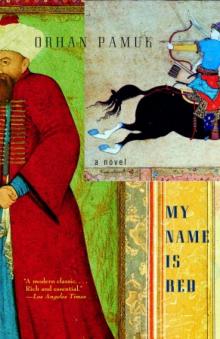 My Name is Red
My Name is Red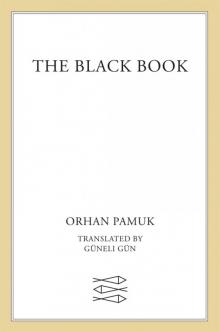 The Black Book
The Black Book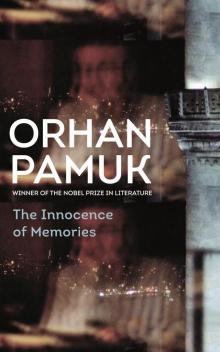 The Innocence of Memories
The Innocence of Memories The White Castle
The White Castle Other Colors
Other Colors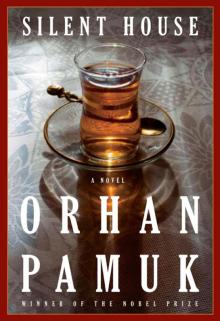 Silent House
Silent House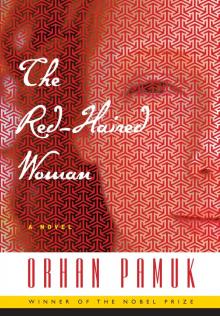 The Red-Haired Woman
The Red-Haired Woman The Museum of Innocence
The Museum of Innocence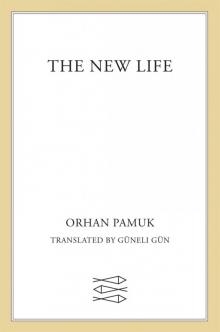 The New Life
The New Life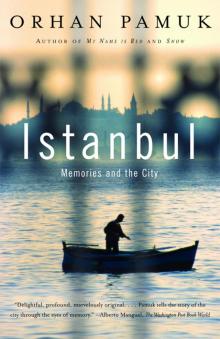 Istanbul
Istanbul